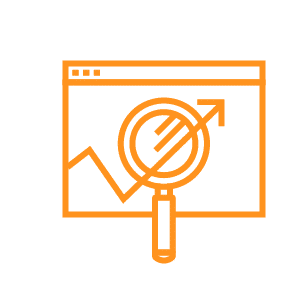Ten Essential Financial KPIs
Finding the critical missing financial KPIs for your business
Typically, within most businesses, the financial measures are the best (sometimes only) KPIs already in place. This is usually because of the legal requirements to submit accounts, pay tax and the fact that if you lose the plot on financial measures you will quickly go out of business - leaving only businesses with some kind of a grip on their finances. The problem with finance measures is that most of them look backwards - they are lagging measures - so make sure you take the time to come up with some forward-looking KPIs too. The ROKS method is designed to help you do this.

The financial KPIs here are probably not going to help you with your legal accounting and reporting requirements (make sure you discuss those with your accountant), but they are definitely going to help you run your business. Keeping a close eye on things like ‘Cash in the bank’, ‘Working Capital Ratio’ and ‘Net Profit’ is the key to a successful business and being able to sleep at night.
Get these definitions in a free download!

We will use your email address to...
- Send you a link to the free template you have requested, so you can download it in future
- Send you our 'Made to Measure KPIs' newsletter
We will never share your details with third parties. You are free to unsubscribe from our newsletter at any point (unsubscribe link included in every email).
Essential Finance KPIs

Cash in bank
Description
There’s not too much explanation required for this one. It’s simply the total amount of available (cleared) cash in your bank , PayPal or wherever else you store your money. Simple though it is, this is the most important measure for your business, along with net profit.
Without cash, you can’t function as a business. Enough said?
Example from Woeful Widget Warehouse
Will logs into his online company bank account and sees the cleared company funds are £24,500. The company also has an overdraft of £2,000 in another account, so...
Net total ‘Cash in bank’ is £24,500 - £2,000 = £22,500
Definition or formula
Sum of [Cash in bank] for all company bank accounts
Typical data sources
- Bank records (don’t forget to include payment services like Stripe and PayPal, if they can hold cash)
Ref: F1.4.0.1

Net Profit
Description
Net profit is the money left once we have covered all our costs. Along with ‘Cash in bank’, this is the most important measure for any business, from a dog walking firm to a multinational.
Net profit is sometimes called ‘the bottom line’ or ‘net earnings’.
Example from Chaos Coffee Shop
For Charlie, last week breaks down like this…
Sales revenue: £5,500
Costs (both controllable, and non-controllable): £4,600
Net profit for week is £5,500 - £4,600 = £900
Definition or formula
Sum of [Sales revenue] - Sum of [Total costs]
Typical data sources
- Receipts
- Bank records (statements or transactions download)
- Invoices
Common problems and mistakes
Unlike gross profit, net profit includes overheads, interest payments. This makes it a little trickier to apply to individual products and services, as you have to ‘allocate’ overhead costs. ‘Allocating overheads’ means chopping up the cost of say, rent, and adding a little bit of the rent costs to the ‘cost’ of each product (or service) sold. This can get complicated pretty quickly, so Gross Margin can be a quicker and easier indicator when you are trying to spot your super-star profitable products and services.
Ref: F1.3.1.1

Invoiced amount in period
Description
To show the total value of sales invoiced in the period. It’s a leading indicator of cash income and cash flow. A vital part of ‘staying in the black’ and not going bust. For a ‘cash’ business, like a small shop, this may not be a relevant measure.
Example from Dangerous Developers
Each week Daniella invoices her five major clients for development time.
The total value of the invoices for last week is £3,100.
Definition or formula
Sum of [Amounts invoiced during the period, less known refunds and cancellations]
Typical data sources
- Invoice copies
- Sales system
- Sales spreadsheet
- Accounting software
Setting targets
It is simple and important to set targets on this but beware of driving the wrong behaviour. Some organisations have set targets on this but discovered that sales teams have ‘sold’ product, only to cancel them after the bonus period is up.
Common problems and mistakes
Be clear on whether you include or exclude sales taxes in this figure. Remember to deduct cancellations and refunds.
Ref: F1.1.1.1

Average days to issue invoice
Description
One common pitfall particularly for busy small companies, is that they “forget” to invoice.
It’s very unlikely that someone will pay until you invoice them, so the quicker you get the invoice out of the door the faster you get paid and the better your cash flow will be. This is a measure to consider if you know you have a problem issuing invoices on time.
Example from Woeful Widget Warehouse
Will typically works one day a week for each of his clients, invoicing on the following Monday. That means his Monday client gets invoiced 7 days after the work, his Friday client 3 day after the work.
Average days to issue an invoice is 5 days.
Definition or formula
Average of [Number of days from completion of work to issuing of invoice]
Typical data sources
- Invoices
- Accounting system
- Work records
- Accounting software
Common problems and mistakes
You need to be clear whether you count non-working days in this calculation. It’s probably worth thinking about what is meaningful. I generally include weekends and bank holidays, as many of your costs and overheads ‘keep on costing’, even when it’s not a working day.
Ref: F1.1.1.3

Cash receipts in period
Description
This shows the amount of cash coming into the business in the period. For businesses that invoice, this is about counting the money when it’s paid or received, not invoiced. This is a crucial figure, as you can spend cash but you can’t spend unpaid invoices!
Example from Chaos Coffee Shop
Charlie sells 2,000 cups of coffee, 1,200 donuts and 300 hot chocolate drinks, taking £5,500 in cash (all his sales are cash).
Cash receipts for the period are £5,500 (Charlie likes to measure things weekly, so that’s his ‘period’).
Definition or formula
Sum of [Cash received in period] - Sum of [Refunds in period]
Typical data sources
- Bank accounts
- PayPal accounts
- Till receipt roll or similar
- Accounting software
Ref: F1.1.1.2

Total costs
Description
Total Costs’, sometimes described as “Total Expenses”, is the total of all costs associated with running your business over a given period. It will include things like payroll, raw materials, loan repayments and many other things. The total costs figure is needed for our Net Profit calculation.
Example from Woeful Widget Warehouse
Will adds up his expenses for each month. These include warehouse rental, van costs, wages, inventory purchase, postage, energy, rates and many other things. If you spend money on it, and it’s for the business, then it’s probably a cost.
Total business costs for the month: £8,400.
Definition or formula
Sum of [All costs for period]
Typical data sources
- Receipts
- Bank records (statements or transactions download)
- Supplier invoices
Ref: F1.2.0.1

Total cost of goods sold
Description
These are the costs directly associated with the production of whatever it is you sell. This would include raw materials, packaging, parts etc.
Example from Chaos Coffee Shop
For Charlie this includes:
- Coffee beans
- Cups
- Milk
- Bought-in food and ingredients
Definition or formula
Sum of [Cost of goods sold]
Typical data sources
- Receipts
- Bank records (statements or transactions download)
- Supplier invoices
Ref: F1.2.1.1

Total controllable costs
Description
A controllable cost is a cost which is not directly associated with creating the product, but which you still have some (or total) control over.
For example, in a fast food restaurant, controllable costs might include payroll, advertising, promotions, linen, maintenance and repairs, utilities.
Controllable costs are often called ‘variable costs’. I like controllable, as it’s a bit more self-explanatory. Controllable costs increase for one of two reasons. Either we are making something less efficiently (bad) or we are making more of something (good, so long as we sell them as well). We can spot the first situation by looking at the ‘unit costs’. If the unit cost goes up then we might have a problem.
Example from Woeful Widget Warehouse
Of Will’s costs, the following are ‘controllable’:
- Van fuel and repairs
- Wages
- Energy bills
- Uniforms
- Maintenance and repairs on the warehouse
Definition or formula
Sum of [Cost of items classified ‘controllable’]
Typical data sources
- Receipts
- Bank records (statements or transactions download)
- Supplier invoices
Ref: F1.2.1.2

Cash forecast
Description
A cash forecast is a running total showing cash income and outgoings over a period of time, and the cash balance at any given time.
This measure is about looking ahead, seeing problems and avoiding them, not just dealing with the mess. It’s a really key tool that will help you avoid one of the most common causes of business failure - running out of cash.
Example from Dangerous Developers
Daniella has £18,000 in the company bank account. Next month she has to pay £4,000 tax bill, £4,000 in wages and another £1,000 in sundry expenses, but expects to receive £10,000 in invoice payments.
The cash forecast for the end of next month will be…
£18,000 - £4,000 - £4,000 - £1,000 + £10,000 = £19,000
Definition or formula
[Cash in bank, previous period] + Sum of [Net cash income] - Sum of [Total costs], for periodTypical data sources
- Tracking spreadsheet
- Accounting software
Ref: F1.0.0.1

Working capital ratio
Description
The working capital ratio shows the ratio of assets to liabilities. This gives a strong indication of whether the business can pay its bills.
A ratio of 2.0 (or 2:1, if you prefer) is generally a good place to be for short term liquidity (cash or things you can rapidly turn into cash).
You may have noticed, this measure is the inverse of the Debt Ratio.
Example from Chaos Coffee Shop
Charlie’s assets are £136,000, His liabilities are £200,000, so his working capital ratio is £136,000 / £200,000 = 0.68.
This is a weak position to be in. Much of his assets and liabilities revolve around his mortgage on the coffee shop. If I were Charlie, I’d want this to be nearer 2.0.
Definition or formula
[Total assets] / [Total debt]Typical data sources
- Inventory control system
- Receipts, bank records (statements or transactions download)
- Invoices
- Accounting software/spreadsheets
- Asset register/log
Ref: F1.4.0.3
Get these definitions in a free download!

We will use your email address to...
- Send you a link to the free template you have requested, so you can download it in future
- Send you our 'Made to Measure KPIs' newsletter
We will never share your details with third parties. You are free to unsubscribe from our newsletter at any point (unsubscribe link included in every email).

